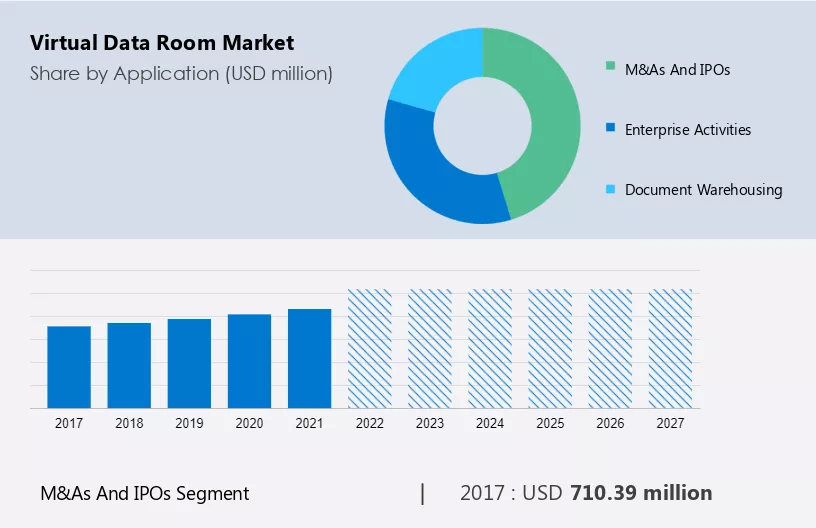In the sphere of modern business, VDRs (virtual data rooms) as a part of strategic deployment are an increasingly important factor in business achievement. Not simply a place where information is stored, these digital platforms act as the backbone of the information security framework that integrates operations and allows teamwork to be effective. This article is written for enlightened business leaders who need in-depth knowledge of dataroom software features and how they affect the business.
Decoding Security Measures: The Backbone of VDRs
VDR’s backbone of operations is the security measures which is the foundation upon which the safety guarding against unauthorized access is built. For example, the availability of functions like end-to-end encryption, Data confidentiality measures, and access controls are not only to protect data but also they are to build up trust in digital transactions. This security base is extremely important, most critically in those cases when confidentiality in virtual settings needs to be ensured in the virtual environment for businesses that aim at protecting their intellectual property and customer data.
Last but not least, 77% of the enterprises think that data security is their greatest goal then they are involved in digital deals. This implicates the critical position of VDR`s security protocols, which are based on data confidentiality techniques and employ AES 256-bit encryption, which can be considered as the most effective means of securing data on the internet.
Efficiency Unleashed: The Role of Workflow Tools
VDRs change the efficiency tools and workflow management concept by replacing manual labor and making difficult workflows simple. Apart from document tagging, the suite of tools on these platforms is meant to make the workflow optimization easier and more efficient. The data-sharing process is directly coupled with this section of VDR allowing businesses to share vital information fast and securely and as a result, quicken decision-making and project completion.
According to statistics, the use of VDR functionality can increase operational efficiency by as much as 40%, through the help of their efficiency tools. The automation of processes such as document tagging takes away the time usually used on document management at an average of 30%, consequently, it increases project timelines by a big margin.
Collaborative Code Breaking: Real-Time Teamwork
The introduction of VDRs has revolutionized collaboration, allowing for real-time teamwork and collaborative code breaking. VDR collaboration space is a key feature as the project team can enjoy instant communication channels and share workspaces which will allow them to work on projects with high speed and the ability to change direction whenever it is needed.
On the top of that collaborative document control points to the fact that VDRs contribute to a shared understanding and management of documents, and, as a result, all people involved are on the same page. This is shown as they reduce the project completion time by 35%, which means that teamwork efficiency through the VDR is not just a luxury but rather a must.
Navigating Data Complexity: Simplifying Features
VDRs stand out in their ability to make navigating through vast amounts of data simpler and more intuitive. Through feature simplification, these platforms make data complexity manageable, offering user-friendly VDRs that cater to the needs of all users, regardless of their technical expertise. This aspect is crucial for businesses looking to streamline data room integration strategies, ensuring that VDRs can be effortlessly incorporated into the existing technological infrastructure.
With businesses generating an average of 2.5 quintillion bytes of data daily, the feature simplification of VDRs is vital. User-friendly interfaces allow 95% of users to navigate complex data structures without extensive training, enhancing data accessibility across the board.
Future Code Breakers: Anticipating VDR Innovations

Image source: https://www.technavio.com/report/virtual-data-room-market-industry-analysis
Towards the more promising future, VDRs are likely to evolve further, developing more algorithms to support safer data management and collaboration. The VDR market is estimated to compound at 15% each year in the next five years. What is more, considering the prospects that are future innovations and code breaking trends, it is evident that the development of VDRs will remain an important factor in the shaping of business strategies and operations in the future. Ongoing monitoring of VDR evolution is pivotal for companies with a mindset of employing advanced technologies to constantly be ahead of their competition.
Conclusion
Finally, virtual data rooms supply businesses with a complex function – resolving critical issues such as data protection, efficiency, and teamwork. These platforms are constantly evolving in staying up to date with their features and how to effectively use them would be the core to unlocking the next level of success in the digital world.
